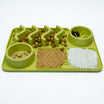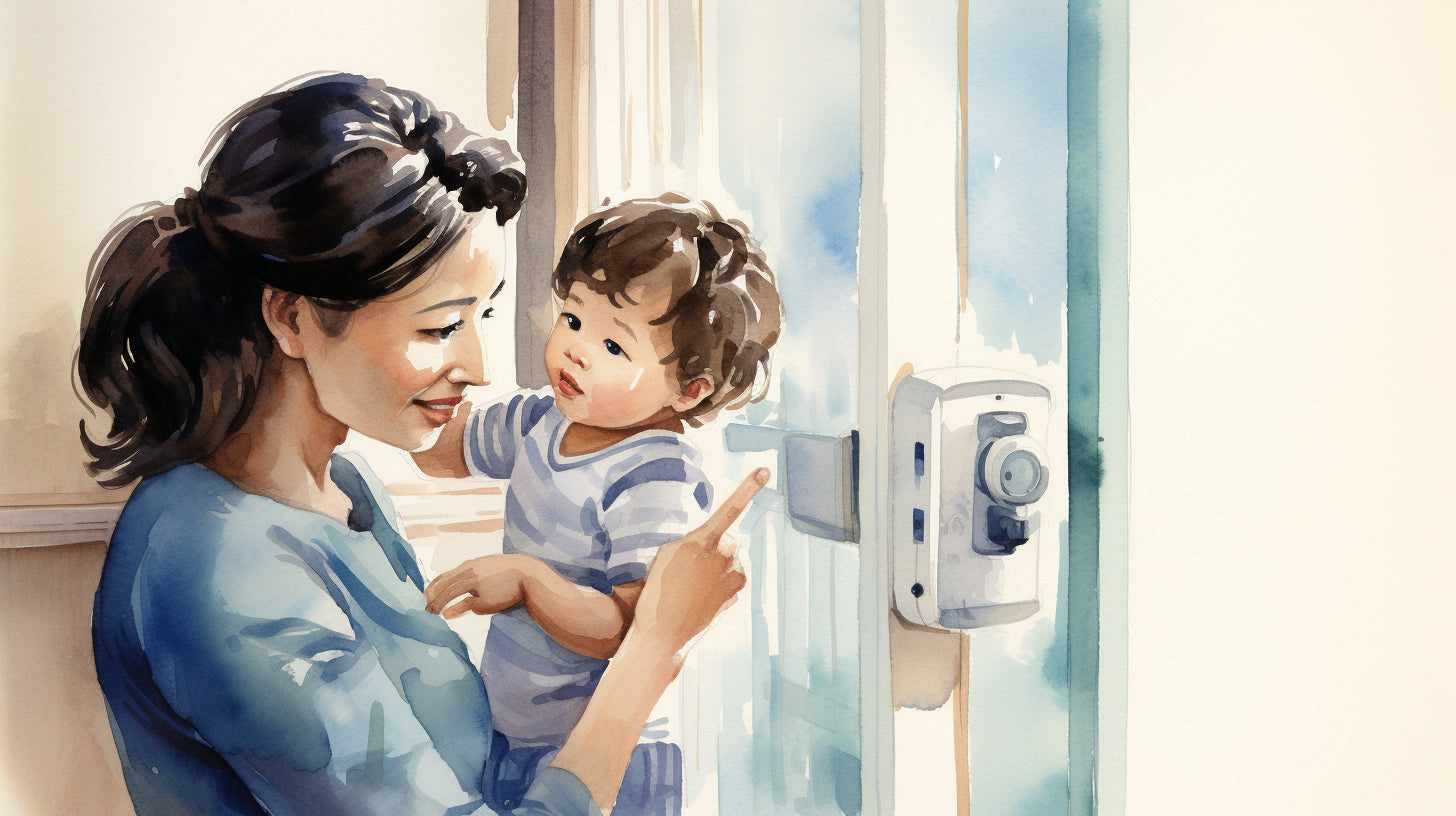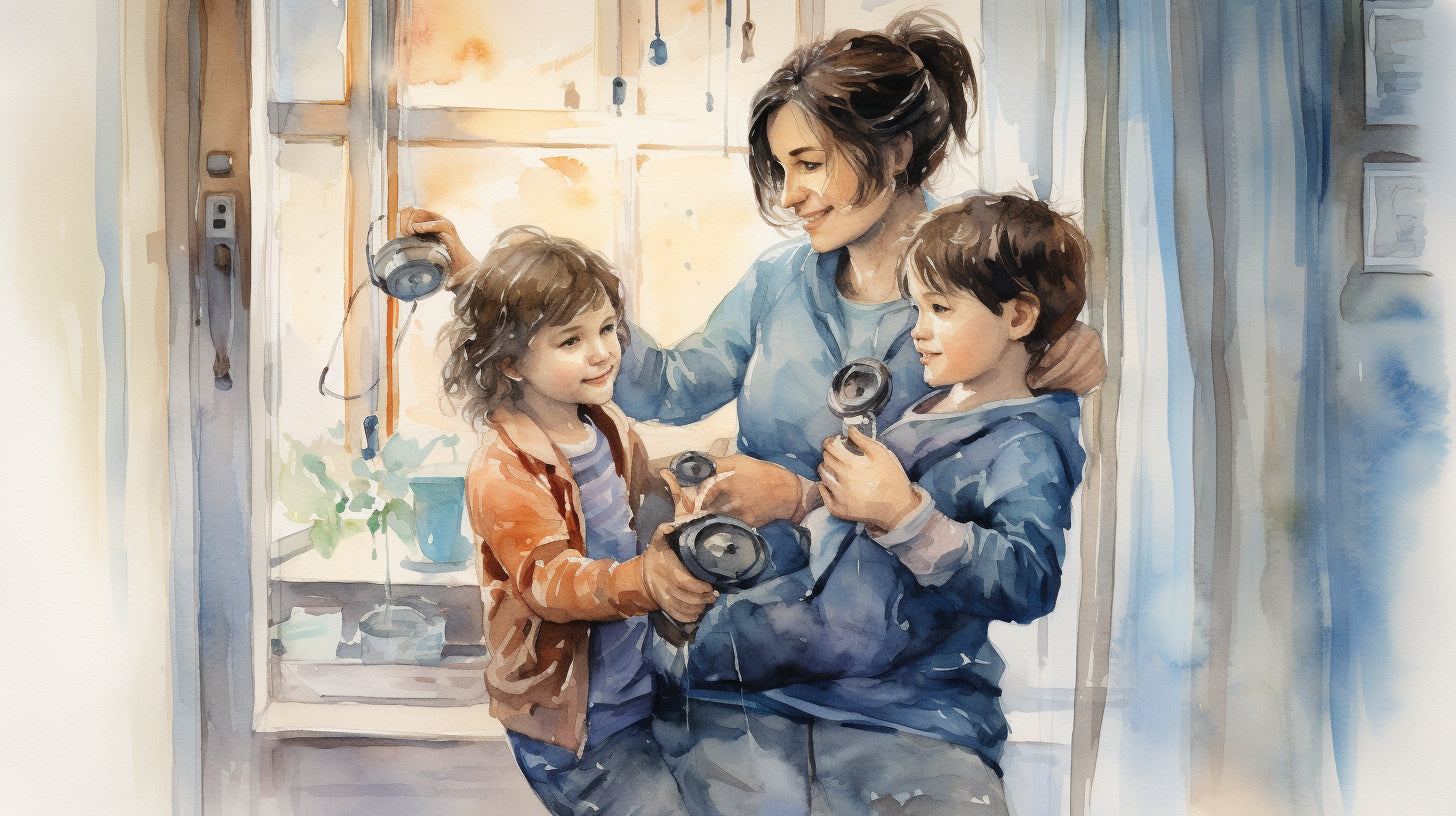Welcome, stay-at-home moms! As a stay-at-home mom, your top priority is the safety and well-being of your family. Whether you're at home during the day or throughout the night, it's essential to ensure that your home is secure and protected.
In this article, we will discuss the home security essentials specifically tailored to meet the needs of stay-at-home moms. We'll explore various aspects of home security, including identifying vulnerable entry points, evaluating your current security measures, installing a home security system, enhancing outdoor security measures, implementing smart home technology, creating a safety plan and communication, practicing personal safety, and emergency preparedness.
By implementing these home security measures, you'll have peace of mind knowing that you're taking proactive steps to keep your family safe. So let's dive in and discover how you can create a secure and protected environment for your loved ones.
Assessing Your Home Security Needs
As a stay-at-home mom, your number one priority is the safety and well-being of your family. One of the best ways to ensure their security is by assessing your home security needs. By identifying potential vulnerabilities and evaluating your current security measures, you can take proactive steps to protect your loved ones and give yourself peace of mind.
Identifying Vulnerable Entry Points
The first step in assessing your home security needs is to identify vulnerable entry points. These are the areas where intruders are most likely to attempt to gain access to your home. Some common vulnerable entry points include:
- Front and back doors
- Windows
- Garage
- Sliding glass doors
By identifying these weak spots, you can prioritize your efforts and allocate resources accordingly.
Evaluating Current Security Measures
Once you have identified the vulnerable entry points in your home, it's important to evaluate your current security measures. Take a look at the existing locks, alarms, and other security features you have in place. Consider the following questions:
- Are the locks on your doors and windows sturdy and secure?
- Do you have an alarm system installed?
- Are your outdoor areas well-lit?
By evaluating your current security measures, you can determine what areas need improvement and what measures are already in place.
"Assessing your home security needs is a crucial step in creating a safe and secure environment for your family. By identifying the vulnerable entry points and evaluating your current security measures, you can take the necessary steps to fortify your home and protect your loved ones."
Securing Doors and Windows
When it comes to securing your home, one of the most important areas to focus on is your doors and windows. These are the primary entry points for potential intruders, so it's crucial to take steps to make them as secure as possible. Here are some essential tips for securing doors and windows to protect your family:
Quality Door Locks and Deadbolts
Investing in high-quality door locks and deadbolts is a fundamental step in securing your home. Opt for sturdy locks that are resistant to picking and tampering. Look for deadbolts that have at least a one-inch throw, as they are more challenging to force open.
Consider installing a smart lock system that offers keyless entry and allows you to control and monitor access to your home remotely. These systems can also provide you with real-time notifications of any unauthorized entry attempts.
Reinforcing Windows
Windows are another common entry point for burglars. Reinforcing them can significantly improve your home's security. Here are a few ways to reinforce your windows:
- Install window security film: This transparent film adds a layer of protection and makes it more difficult for intruders to break the glass.
- Add window bars: Window bars, especially on ground-level windows, act as a physical barrier to prevent unauthorized access.
- Use window locks and pins: Make sure all your windows have working locks, and consider adding pins or security locks for added protection.
Installing Window Security Film
Window security film is a cost-effective and easy way to strengthen the security of your windows. It is a clear, adhesive film that is applied to the inside of the window. Here's why it's a great option:
- It adds an extra layer of protection by making the glass more resistant to breaking and shattering.
- It can help prevent burglars from gaining easy access to your home.
- The film also has the added benefit of providing UV protection, reducing glare, and increasing energy efficiency.
Pro Tip: When securing windows on higher floors, consider installing window bars or limiting access by keeping trees or large objects away from the window.
By implementing these measures, you can significantly improve the security of your doors and windows, making it harder for criminals to gain unauthorized entry. Remember, proactive steps in securing your home can go a long way in protecting your family and giving you peace of mind.
Installing a Home Security System
When it comes to protecting your home and family, installing a home security system is an essential step. A good home security system can provide you with peace of mind, knowing that your loved ones and valuable possessions are safe. But with so many options available, how do you choose the right security system for your needs? Here are some factors to consider when installing a home security system:
Choosing the Right Security System
Before diving into the different features and options available, it's important to assess your specific needs. Ask yourself the following questions:
- Do you need a system that includes 24/7 monitoring?
- How many entry points and windows do you want to secure?
- Are you looking for a wireless or hardwired system?
- Do you want to integrate your security system with other smart home devices?
Based on your answers, you can narrow down your options and choose the right security system. Here are some popular types of home security systems:
- Monitored Security Systems: These systems are connected to a professional monitoring center that alerts authorities in case of a break-in or emergency. They usually come with monthly monitoring fees but provide an extra layer of protection.
- Wireless Systems: Wireless systems use wireless technology to communicate between sensors, control panels, and cameras. They are easy to install and can be managed remotely through a smartphone app.
- Smart Home Security Systems: These systems integrate with other smart home devices, allowing you to control and monitor your security system through voice commands or a mobile app. They often include features like video doorbells, smart locks, and motion sensors.
Placement of Security Cameras
When installing security cameras, strategic placement is crucial to capture the best footage and maximize the effectiveness of your system. Here are some tips:
- Cover Entry Points: Install cameras near your front and back doors, as well as any other vulnerable entrances like windows or side doors.
- Cover Blind Spots: Identify blind spots around your property, such as areas behind tall shrubs or dark corners, and place cameras to cover them.
- Height and Angle: Mount cameras at a height that is out of reach but ensures a clear view of the area. Position them at an angle that captures the full range of motion.
- Indoor Placement: Consider placing cameras indoors as well, especially in common areas or near valuables.
Integrating Motion Sensors
Motion sensors are an important component of any home security system. They detect movement in designated areas and trigger alarms or alerts. Here are some ways you can integrate motion sensors into your home security system:
- Interior Motion Sensors: Place motion sensors in high-traffic areas like hallways and staircases. This ensures that any intruders or unusual movements are detected.
- Exterior Motion Sensors: Install motion sensors near entrances and other vulnerable areas outside your home. This will trigger lights and cameras, deterring potential intruders.
- Pet-Friendly Sensors: If you have pets, consider installing pet-friendly motion sensors that can differentiate between the movements of animals and humans.
Remember to test your motion sensors regularly and adjust their sensitivity according to your needs. Additionally, make sure to place them where they will not be triggered by pets or other non-threatening movements.
Installing a home security system is an investment in the safety and well-being of your family. Take the time to research and choose the right system for your needs, and don't forget to properly place your security cameras and motion sensors for optimal coverage. With a well-designed and well-maintained security system in place, you can enjoy the peace of mind that comes from knowing your home is protected.
Enhancing Outdoor Security Measures
When it comes to home security, it's not just the inside of your home that needs protection. Enhancing outdoor security measures is essential to creating a safe environment for your family. Here are some tips on how you can improve the security of your home's exterior:
Installing Outdoor Lighting
- Outdoor lighting is one of the most effective ways to deter criminals from targeting your home. By illuminating the exterior of your house, you make it less attractive to potential burglars who prefer to operate in the dark.
- Install motion sensor lights around your property, especially in areas that are prone to shadows or hidden corners. These lights will automatically turn on whenever someone approaches, alerting you to any suspicious activity.
- Consider investing in landscape lighting to illuminate pathways, driveways, and entryways. This not only enhances safety but also adds a touch of elegance to your home.
Trimming Landscaping for Visibility
- Overgrown bushes, hedges, and trees can provide hiding spots for criminals. Regularly trim your landscaping to improve visibility around your property. This will eliminate potential hiding places and make it easier to detect any unauthorized individuals.
- Be mindful of shrubbery near windows or entrances. It's a good idea to keep these areas clear to minimize any potential obstructions to the view.
Securing Gates and Fences
- Gates and fences act as a physical barrier between your home and the outside world. It's crucial to ensure that they are secure and well-maintained.
- Regularly inspect and repair any damages to your gates or fences. Ensure that they are sturdy and have proper locks or latches to prevent unauthorized access.
- Consider adding an alarm or security sensor to your gates to alert you if someone tries to breach them.
By implementing these outdoor security measures, you can significantly enhance the safety of your home and protect your family. Remember, a well-lit and well-maintained exterior is a powerful deterrent against potential threats.
"Lighting is an important aspect of outdoor security. Motion sensor lights are a great addition to your home, automatically turning on when there is any movement. This can scare off potential intruders and give you an alert of any suspicious activity."
Implementing Smart Home Technology
In today's digital age, technology has made our lives more convenient and secure, and implementing smart home technology is a great way to enhance your home security as a stay-at-home mom. Smart home devices offer advanced features that can help monitor and protect your home, providing peace of mind for you and your family. Here are some smart home technologies you can consider for your home:
Smart Locks and Access Control
- Smart locks allow you to control access to your home remotely. You can lock and unlock your doors using your smartphone, eliminating the need for keys.
- Some smart locks also offer features like temporary access codes, which are useful when you have visitors or service providers coming to your home. You can create unique codes for each person and easily deactivate them when they are no longer needed.
- With access control technology, you can also receive notifications when someone enters or leaves your home. This can be particularly helpful for keeping track of your children's movements.
Video Doorbell Systems
- Video doorbell systems have become increasingly popular as they provide an added layer of security to your home. These devices come with a built-in camera, microphone, and speaker, allowing you to see and communicate with whoever is at your door, even when you're not home.
- Video doorbells can send notifications to your smartphone whenever someone rings the doorbell or triggers the motion sensor. This enables you to monitor and interact with visitors remotely, which can be especially useful if you're not expecting any guests or if you want to avoid answering the door for strangers.
- Some video doorbell systems also offer features like recording and storing video footage, so you can review it later if needed.
Smart Lighting and Alarms
- Smart lighting systems allow you to control your home's lighting from your phone or tablet. This can be helpful for creating the illusion that someone is home, even when you're away, which can deter potential intruders.
- You can schedule lights to turn on and off at specific times or control them remotely when you're away. Some systems even have motion sensors that can automatically turn on the lights when someone enters a room.
- Smart alarms, on the other hand, can detect smoke, carbon monoxide, and even unusual sounds like glass breaking. They send instant alerts to your smartphone, enabling you to take immediate action if there's an emergency.
Implementing smart home technology can greatly enhance your home security and bring convenience to your daily life. With these devices, you can have better control over who enters your home, monitor your surroundings, and quickly respond to any potential threats. So, why not take advantage of these advanced technologies and make your home a smarter and safer place for your family?
"Smart home technology offers convenience, comfort, and most importantly, enhanced security for stay-at-home moms. With features like smart locks, video doorbell systems, and smart alarms, you can have peace of mind knowing that you can monitor and control your home from anywhere."
Creating a Safety Plan and Communication
As a stay-at-home mom, it's crucial to have a safety plan in place to protect your family and maintain peace of mind. Having a comprehensive and well-thought-out safety plan can ensure that everyone in your household knows what to do in case of an emergency. Additionally, establishing clear communication channels with your family members and neighbors is key to staying connected and staying safe. Here are some essential tips for creating a safety plan and establishing effective communication:
Establishing Codes and Passwords
- Consider establishing secret codes or passwords that only your family members are aware of. This can be useful in situations where someone unfamiliar tries to gain access to your home or if you need to send a trusted person to pick up your child.
- Create a code word that your children can use to indicate that they are in danger or need assistance. This can help them notify you discreetly and without alarming the potential threat.
Teaching Kids Basic Safety Measures
- Educate your children about basic safety practices, such as not opening the door to strangers, not sharing personal information online, and avoiding unsafe areas in the neighborhood.
- Teach your kids emergency contact numbers and make sure they know how to dial them in case of an emergency. Practice role-playing scenarios with your children to prepare them for different situations.
Communication with Neighbors
- Building a strong network with your neighbors is essential for staying safe and informed. Get to know your neighbors and establish a system of communication where you can look out for each other.
- Create a neighborhood watch group or join an existing one. This allows you to share information about suspicious activities, exchange tips on home security, and support one another in ensuring the safety of your community.
Remember, communication is key in creating a safety plan. Ensure that all family members are involved in the process and understand the importance of following the plan. Revisit and update the plan regularly to accommodate any changes in circumstances or new safety concerns.
Practicing Personal Safety at Home
When it comes to home security, it's not just about securing your property - it's also about keeping yourself and your family safe. As a stay-at-home mom, ensuring personal safety should be a top priority. Here are some essential strategies you can implement to practice personal safety at home:
Keeping Valuables Out of Sight
- Burglars are often opportunistic, so it’s important to keep valuables out of sight.
- Avoid displaying expensive items in plain view from windows or doors.
- Close curtains or blinds when you're not using a room to prevent outsiders from seeing your belongings.
Using Safes for Important Documents
- Invest in a fireproof and waterproof safe to protect important documents such as passports, birth certificates, and insurance policies.
- Store your safe in a secure location that is difficult for intruders to find, such as a hidden closet or bolted to the floor.
- Make regular backups of digital files and store them in a separate location or on a cloud-based storage service.
Maintaining Adequate Home Insurance
- Make sure you have adequate home insurance coverage to protect against theft, fire, and other potential incidents.
- Regularly review and update your policy to ensure it reflects the value of your possessions and the current replacement costs.
- Keep an inventory of your belongings, including photographs and receipts, to make the claims process easier in case of a theft or disaster.
It's essential to remember that personal safety goes beyond securing your property. By implementing these strategies, you can create a safer environment for yourself and your family.
"Keeping your valuables out of sight and using a safe for important documents are simple yet effective ways to enhance personal safety at home."
Emergency Preparedness for Stay-at-Home Moms
As a stay-at-home mom, ensuring the safety and well-being of your family is your top priority. In addition to home security measures, it is crucial to have an emergency preparedness plan in place. Being prepared for unforeseen events such as natural disasters or medical emergencies can make a significant difference in the safety and survival of your family. Here are some essential steps to help you create an effective emergency preparedness plan:
Building an Emergency Kit
- Create an emergency kit that includes essential items such as non-perishable food, water, medication, first aid supplies, flashlights, batteries, and a portable phone charger.
- Remember to include items specific to the needs of your family members, including baby supplies, pet food, and any necessary prescription medications.
- Store your emergency kit in a secure and easily accessible location, such as a closet or basement.
Knowing Emergency Contact Information
- Keep a list of important phone numbers, including emergency services, doctors, pediatricians, and neighbors who can assist during an emergency.
- Program these phone numbers into your mobile phone and have a printed copy in your emergency kit.
- Teach your children how to dial emergency services and make sure they know their full name, address, and phone number.
Evacuation Planning
- Identify potential evacuation routes in your area, including designated emergency shelters or designated safe spots.
- Have a meeting point outside your home where family members can gather in the event of an evacuation.
- Practice evacuation drills with your family to ensure everyone knows what to do and where to go.
Remember, being prepared is key to handling emergencies effectively. By taking these steps and having an emergency preparedness plan in place, you can help protect your family and provide them with the comfort and security they need during challenging times.
Being prepared for emergencies is crucial for stay-at-home moms. By building an emergency kit, knowing emergency contact information, and planning for evacuation, you can ensure the safety of your family in challenging situations.
Conclusion
Conclusion
Ensuring the safety and security of your home and family should always be a top priority, especially for stay-at-home moms. By taking the necessary steps to assess your home security needs, secure doors and windows, install a home security system, enhance outdoor security measures, implement smart home technology, create a safety plan and communication, practice personal safety at home, and prepare for emergencies, you can significantly reduce the risk of any potential threats.
Remember, your home should be a place where you and your family feel safe and protected. By implementing these home security essentials, you can have peace of mind knowing that you have taken proactive measures to safeguard your loved ones and your property.
At Empowered by Ashley, we understand the importance of personal safety and security. That's why we offer a range of products designed to empower individuals and provide peace of mind. Our best-selling Personal Safety Alarm is compact, easy to use, and emits a loud sound to deter potential attackers.
Visit our website at empoweredbyashley.com to explore our range of products and take the first step towards creating a safer and more secure home environment. Remember, your family's safety is priceless, and investing in home security measures is an investment in their well-being. Stay empowered, stay safe!
Frequently Asked Questions
-
What are the essential home security measures for stay-at-home moms?
Some essential home security measures for stay-at-home moms include installing a reliable home security system, securing doors and windows, using smart locks, setting up video surveillance, and practicing good home security habits.
-
Why is it important for stay-at-home moms to prioritize home security?
Stay-at-home moms are often responsible for the safety and well-being of their family members at home. Prioritizing home security ensures a safe environment, provides peace of mind, and helps protect against potential threats or intrusions.
-
What are the benefits of having a home security system?
Having a home security system offers several benefits. It deters potential burglars, alerts homeowners and authorities in case of a break-in, provides remote monitoring capabilities, and can even lower home insurance premiums.
-
How can stay-at-home moms secure their doors and windows effectively?
Stay-at-home moms can secure doors and windows by installing deadbolt locks, reinforcing door frames, using window locks and security film, and ensuring proper lighting around entry points. Regularly checking and maintaining these security measures is also important.
-
Are smart locks a useful addition to home security for stay-at-home moms?
Yes, smart locks are a useful addition to home security for stay-at-home moms. They provide convenience by allowing keyless entry, offer remote locking and unlocking capabilities, and enable monitoring and controlling access to the house from a smartphone.
















Leave a comment
This site is protected by hCaptcha and the hCaptcha Privacy Policy and Terms of Service apply.